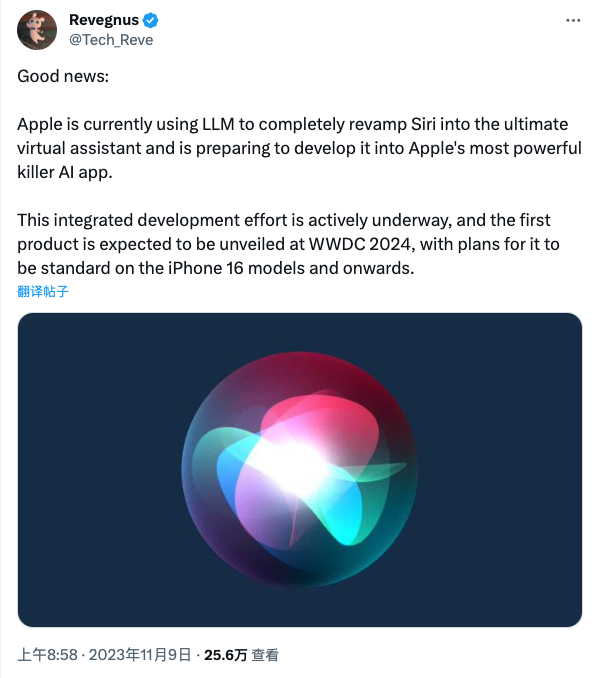
11-12 #BadEyes : Samsung is reportedly working on mid-range Galaxy foldables for 2024; OPPO and Hasselblad announced next-gen HyperTone Camera System; Samsung is to expand NAND production cuts by 40-50% by 1H24; etc.

In response to the global shortage of GPUs, Fujitsu has developed “Adaptive GPU Allocator Technology”, a technology that can automatically switch between CPU and GPU computing resources in real time even during program processing. This technology can allocate GPUs in real time according to the computational processing required by each program, even in environments where multiple programs are running simultaneously. Optimization of calculation processing is achieved by allocating the GPU preferentially to programs that are expected to be faster, while processing other programs using the CPU. The company has also developed “Interactive HPC technology”, which enables parallel processing of multiple programs in an HPC system that allows multiple PCs to work together. It is said to enable instant processing of digital twins and generative AI that require large-scale computing resources and real-time performance.(CN Beta, Fujitsu, Fujitsu, PC Watch)
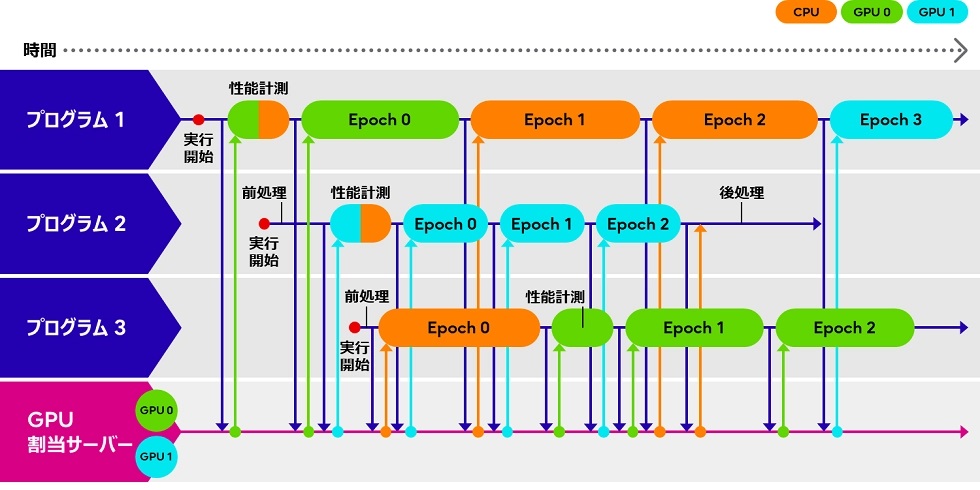
AMD is expected to utilize Samsung’s 4nm and TSMC’s 3nm process node for its next-generation chips as hinted in a new leak along with a brand new Prometheus codename. Zen 4 codename is Persephone, Zen 5 is Nirvana, and Zen 6 is Morpheus. It is known that the Zen 4C core is codenamed Dionysus so the likelihood of Prometheus being the codename of the Zen 5C core is high.(WCCFtech, CN Beta, Leak)

Intel has reportedly shelved a planned investment in Vietnam that could have nearly doubled the the company’s operation there. Intel has declined to comment but responded that Vietnam will continue to be a critical part of their global manufacturing operations as demand for semiconductors grows. (Gizmo China, SCMP, Reuters)
Nvidia reportedly plans to release new artificial intelligence (AI) chips aimed at the Chinese market after U.S. officials tightened the rules on selling high-end AI chips to China. The Nvidia chips are called the HGX H20, L20 PCIe and L2 PCIe. Nvidia already has product samples for these GPUs and they will go into mass production within Nov 2023. In short, Nvidia is perfectly straddling the line on peak performance and performance density with these new chips to get them through the new US regulations. (Engadget, Reuters, WSJ, SemiAnalysis)
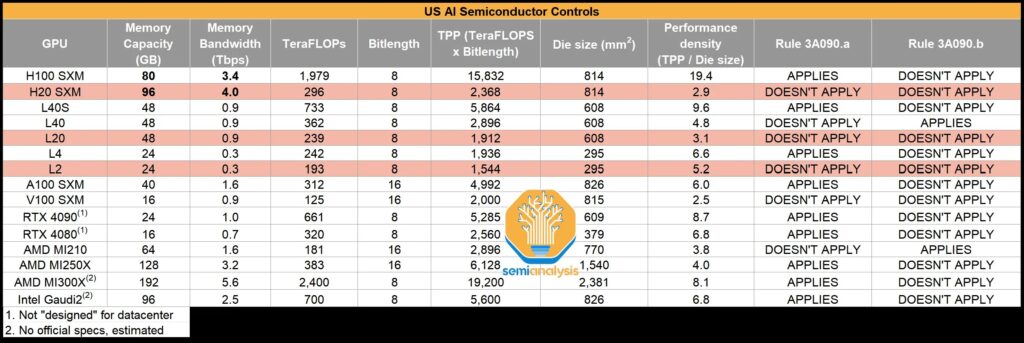
Imagination Technologies launches IMG DXD, the first product in a new line of high-performance GPU IP with support for DirectX. Starting with a hardware-based implementation of DirectX 11 Feature Level 11_0, the new IMG DXD has the API coverage to run popular PC games as well as other Windows-based applications and mobile titles. It has already been licensed for use in the desktop market. IMG DXD offers 2.25x the per-core graphics performance of IMG BXT, the GPU currently shipping in PCIe factor boards. An IMG DXD dual-core configuration delivers 5 TFLOPS FP32 and 144 GTexel/s, more than enough to satisfy mainstream gamers with smooth frame rates. Licensees can leverage Imagination’s innovative multi-core technology to continually scale this performance to higher levels. (CN Beta, Imagination, VideoCardZ, Business Wire, Hot Hardware)
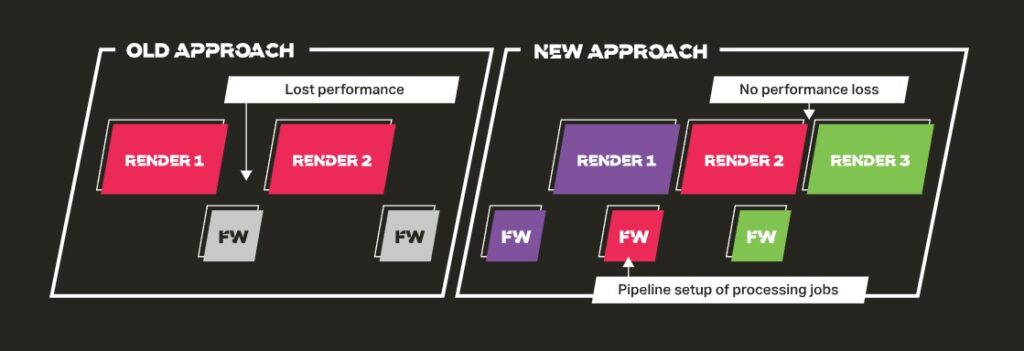
Japan’s Economy Ministry is preparing a total JPY2T (USD13B) in subsidies to drive investment in its chip industry in a bid to regain its status as a major semiconductor power. The Ministry of Economy, Trade and Industry is seeking JPY1.85T in an extra budget, on top of as-yet-unspent money for chip-related subsidies. The money will be used to speed up Japan’s ability to design and manufacture next-generation chips and train artificial intelligence model. Japan is trying to reclaim leadership in the chips industry after decades of eroding prominence. It’s shouldering almost half the cost of TSMC’s Kumamoto factory while in talks about support for a second plant; it’s poised to provide about USD1.5B to help finance an expansion at Micron Technology’s Hiroshima factory; and it’s bankrolling Rapidus’ attempt to make the country’s own cutting-edge 2nm chips. Rapidus is taking on a long-shot effort to build a Japanese chip foundry that can compete with the likes of TSMC and Samsung Electronics. Tetsuro Higashi, the company’s chairman, said the state-backed firm aims to build a cutting-edge foundry by 2027, with the goal of fortifying Japan’s economy by ensuring steady supplies. (CN Beta, Japan Times, Nikkei Asia, Bloomberg, Reuters, Yahoo)
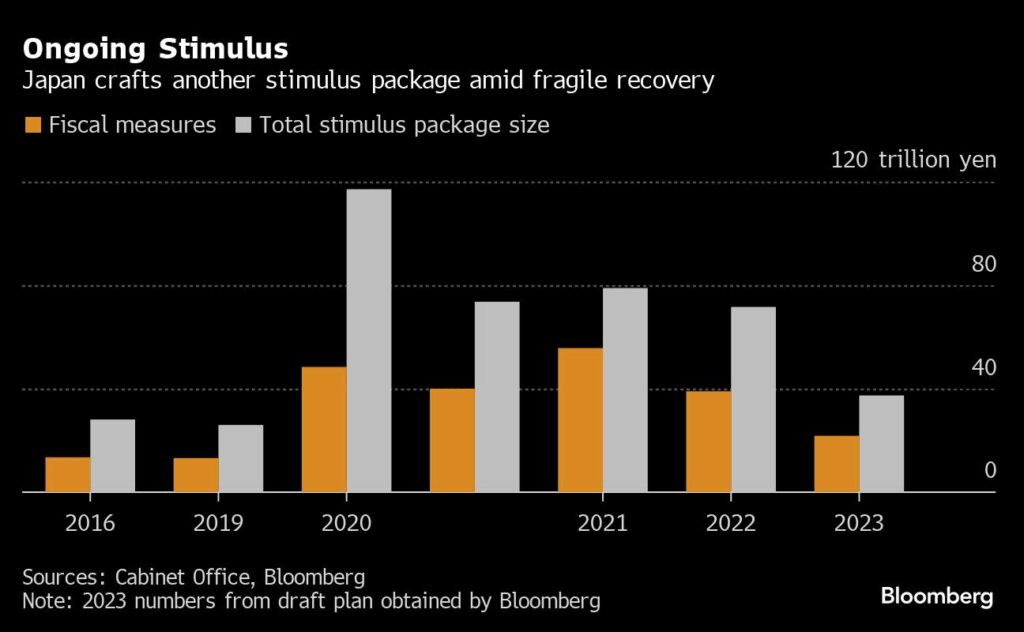

Samsung is reportedly working on mid-range Galaxy foldables for 2024. Samsung aims to charge USD400-500 for a mid-range Galaxy foldable phone. TrendForce also hints that we might be seeing mid-range Galaxy foldable phones catered to users who are on a budget yet want to enjoy the uniqueness foldable phones add to their smartphone experience. (Android Central, Android Authority, Twitter, TrendForce)
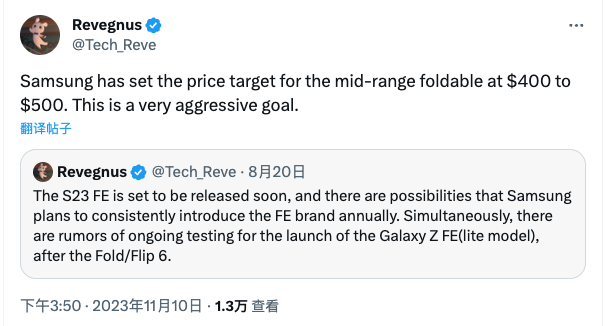
In 2023, the lowest price for foldable phones has already dropped to CNY3,659, setting a new record. In the upcoming year, more manufacturers will introduce higher-value foldable phone products, thus accelerating the broader adoption of foldable phones. TrendForce believes that the driving force behind the foldable market’s expansion is the reduced costs and the expansion strategies of Chinese brands. In 2024, Huawei and Samsung plan to introduce more competitively priced foldable phones, and other Android manufacturers are expected to follow suit, driving accelerated expansion in the foldable phone market. Looking at TrendForce’s estimated numbers , by 2023, shipments of foldable smartphones could skyrocket to an impressive 18.3M units, marking a 43% YoY surge. However, this only captures a slim 1.6% of the year’s total smartphone market. Fast forward to 2024, a 38% growth is anticipated, translating to a hefty 25.2M units and nudging the market share up to 2.2%. Looking at the medium to long term, TrendForce believes the expansion of the foldable smartphone market is inevitable. By 2027, shipments could soar to a whopping 70M units, seizing around 5% of the global smartphone market. (Gizmo China, TrendForce)

In Feb 2022, OPPO announced a 3-year partnership with Hasselblad to co-develop advanced camera technologies for its flagship phones. The next-gen Hasselblad HyperTone Camera System consists of the HyperTone All Main Camera System, HyperTone Image Engine, and HyperTone ProXDR Display. These solutions help achieve high-quality images in all lighting conditions and focal lengths with fewer digital artifacts and noise. The computational photography system tackles all hurdles faced by traditional mobile photography tech. OPPO adds that a great imaging experience is incomplete without quality photo viewing. This is where HyperTone ProXDR Display comes into play. It can precisely record the brightness of 12 million pixels and offers up to eight times more dynamic range on-screen. (Android Headlines, OPPO, Sohu, Sina)
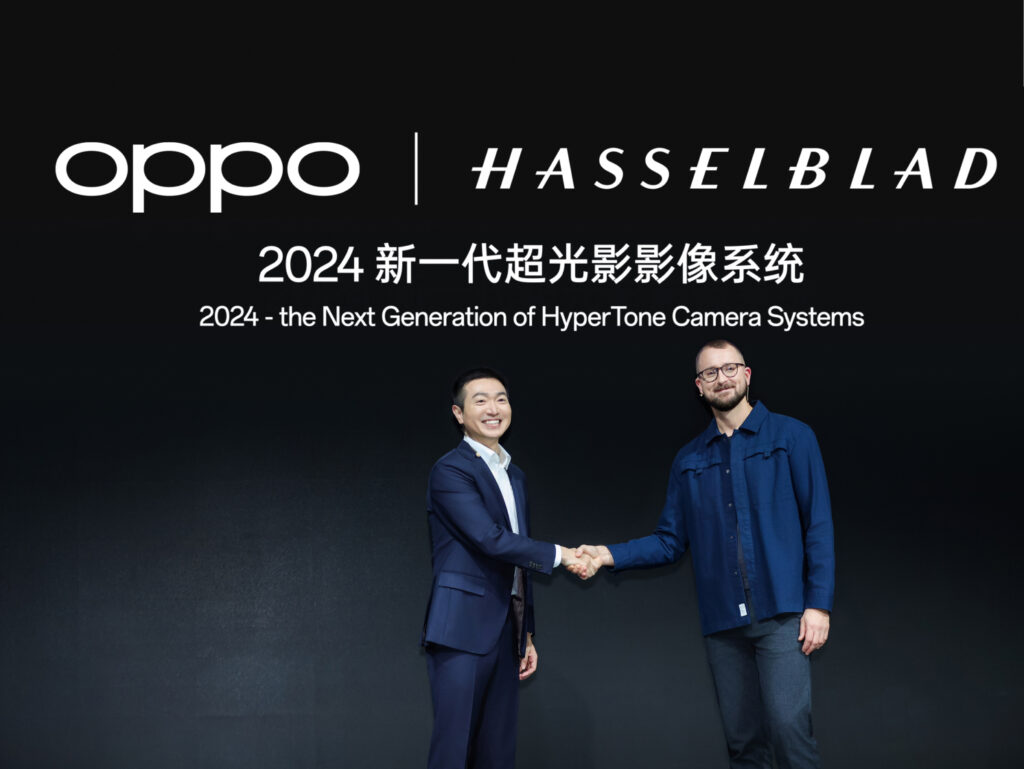

According to TrendForce, Samsung Electronics is estimated to raise NAND prices by up to 10-15% in 4Q23. There are also forecasts of an additional 10-20% increase in 1H24. The actual increase in NAND prices has already begun. According to market research firm DRAMeXchange, the prices of universal 128 Gb NAND for memory cards and USB devices have risen by 1.59% as of Oct 2023. This marks the first rebound since Jul 2021. While demand recovery is still slow, production cuts have driven prices up. Suppliers have expanded production cuts to levels below cost as they cannot afford to sell at a loss. In fact, Samsung Electronics is reported to expand NAND production cuts by 40-50% by 1H24. (CN Beta, Business Korea)

The total bill of materials (BoM) cost to produce Apple’s 8GB+256GB iPhone 15 Pro Max comes to USD37.7 or 8% higher than that for the 6GB+256GB iPhone 14 Pro Max launched in 2022, according to Counterpoint Research. Counterpoint Research estimates indicate that its self-designed components its self-designed components, such as the processor, the upgraded UWB and power management ICs, account for 25% of the total BoM cost of the iPhone 15 Pro Max, up from 22% in the iPhone 14 Pro Max. (GSM Arena, Counterpoint Research)
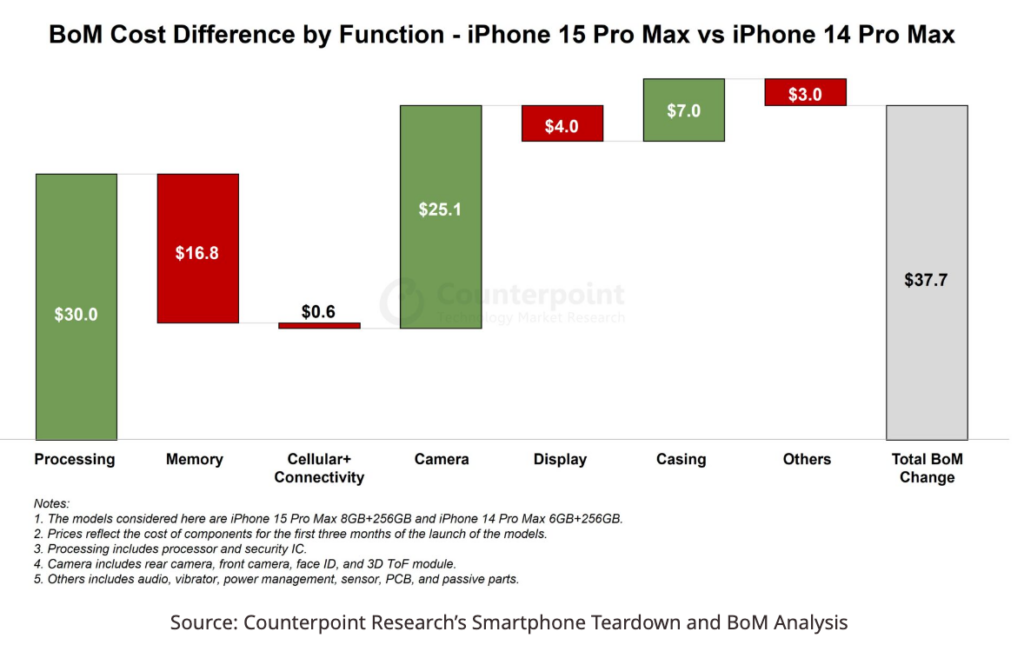
Apple is set to appeal to the European Union about the inclusion of its App Store and iMessage services in the Digital Markets Act. The EU has deemed the App Store and iMessage as gatekeeper monopoly services, which will require Apple to make changes like allowing alternatives to In-App Purchases, app sideloading, and more. Apple will object to the inclusion of iMessage as a gatekeeper service (following earlier comments that the service is not big enough in Europe to qualify), and debate exactly what slice of the App Store is under regulation.(CN Beta, Bloomberg, GizChina, 9to5Mac, Reuters)
Luxshare Precision continues to decentralize its supply chain and will invest an additional USD330M to build factories in Vietnam. Luxshare Precision’s new factory is located in Bac Giang Province in northern Vietnam. The local government statement pointed out that Luxshare Precision’s additional investment brought the investment to USD500M, and revealed that the factory will produce wires for smart devices, communication equipment, and induction. Pens, smart watches and location tracking devices. The factory is expected to be completed in 1-2 years. The Bac Giang Provincial Industrial Zone Administration Bureau has granted a revised investment license to Luxshare Precision on 6 Nov 2023. Luxshare Precision is one of Apple’s suppliers of many products, including its wireless Bluetooth headset product AirPod. It began investing in Vietnam in 2019. In addition, Goertek, another important AirPods supply chain manufacturer in mainland China, currently also has a factory in northern Vietnam. (EET-China, Ijiwei, CTEE, Apple Insider, China Times)
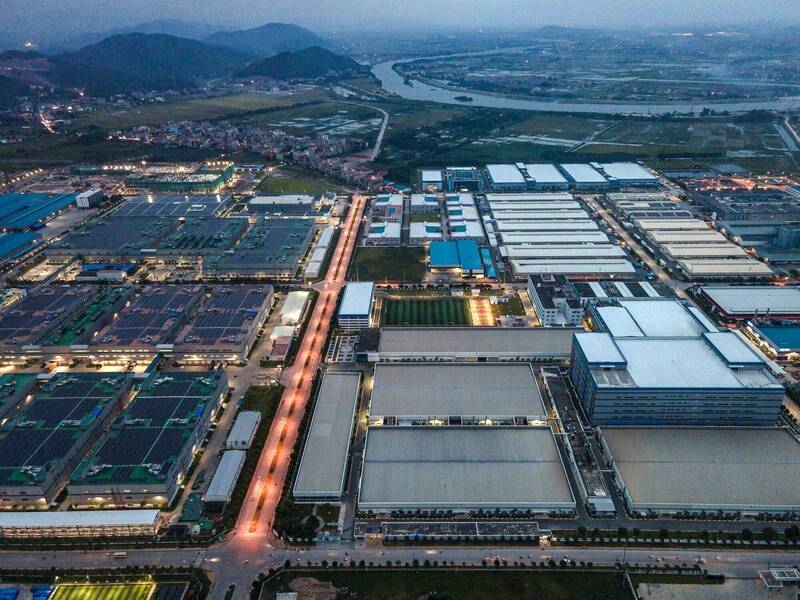

Google completed its acquisition of Fitbit back in 2021, with the company claiming this deal would make health and wellness “more accessible to more people”. Google has confirmed that Fitbit would be leaving over a dozen markets in Asia and Europe. In Asia, these markets are Hong Kong, Korea, Malaysia, the Philippines, and Thailand. As for Europe, Fitbit is leaving Croatia, the Czech Republic, Estonia, Hungary, Latvia, Lithuania, Luxembourg, Poland, Portugal, Romania, and Slovakia.(Android Authority, Google, TechCentral)


In Feb 2023, Samsung joined hands with Google and Qualcomm to develop XR (extended reality) technologies and experiences for the future. It appears the collaborative effort of the three companies will bring an XR headset in 2024. Samsung reportedly planned to launch its first XR headset in early 2024, possibly alongside the Galaxy S24 series in Jan 2024. However, it delayed the plan to improve the product. Samsung is now preparing to launch the XR headset, codenamed “Infinite”, in Dec 2024. Samsung has set an extremely modest initial production volume of just 30,000 units for its first XR headset. (Android Headlines, JoongAng)
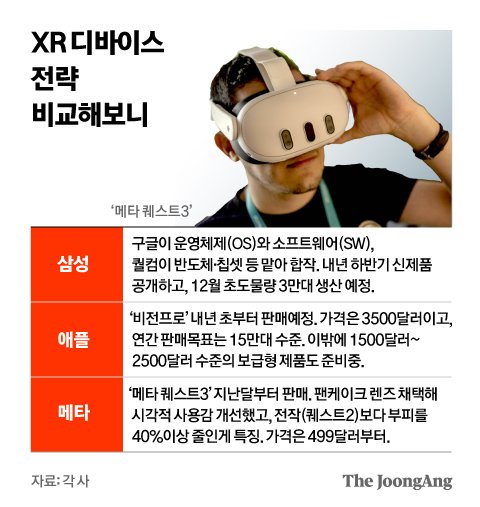
Apple is allegedly working on a second-generation XR headset. The second-generation Apple Vision Pro headset, known internally under the codename Project Alaska and device identifier N109, bears striking resemblance to the first-generation Vision Pro. While the device maintains the curved aesthetic and button placement of the first Vision Pro, the speaker placement is expected to be different. The second-generation headset features straps that are simpler in design and appearance, being somewhat reminiscent of the flat straps commonly found on laptop bags or backpacks. The second-generation Apple headset is scheduled for the product validation testing (PVT) stage of development in 2025, suggesting a release date of late 2025 or early 2026. (CN Beta, MacRumors)
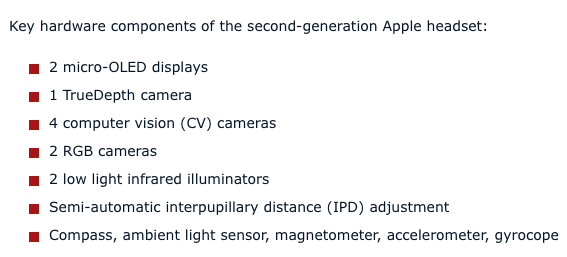

Samsung has previewed what it calls “a new era of Galaxy AI” coming to its smartphones and detailed a forthcoming feature that will use artificial intelligence to translate phone calls in real time. Samsung claims that its Galaxy AI is a comprehensive mobile AI experience, powered by both on-device AI developed at Samsung and cloud-based AI. The company says Galaxy AI is coming “early 2024”, so it seems likely that Galaxy AI features will be included with Samsung’s Galaxy S24 lineup of smartphones. (Samsung, The Verge, GizChina)
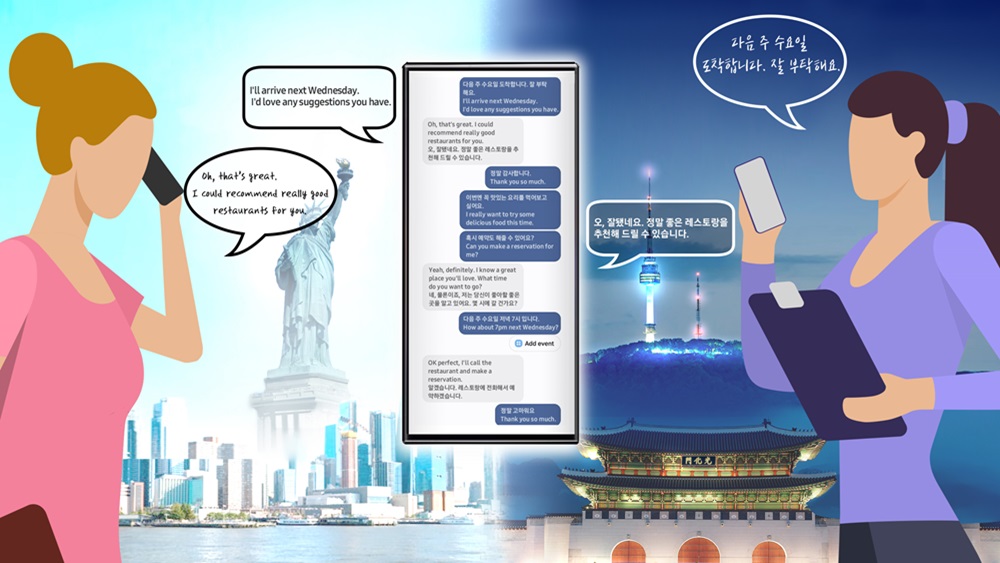
Samsung has announced its own generative AI model, called Gauss. The on-device AI model consists of Samsung Gauss Language, Samsung Gauss Code, and Samsung Gauss Image – each part tailored for its specific task. Samsung Gauss Language is a generative language model that can compose emails, summarize documents, and translate content. It can also enable smarter device control (think Google Home or Amazon Alexa). Samsung Gauss Code uses the coding assistant code.i, which allows developers to code easily and quickly, perform code description and test case generation. Samsung Gauss Image is a generative image model that can create and edit images, change their style, and even convert low-res images to high-res. Samsung Gauss will be an integral part of the Galaxy S24 series, which is expected to be launched in Jan 2024. (GSM Arena, Samsung)
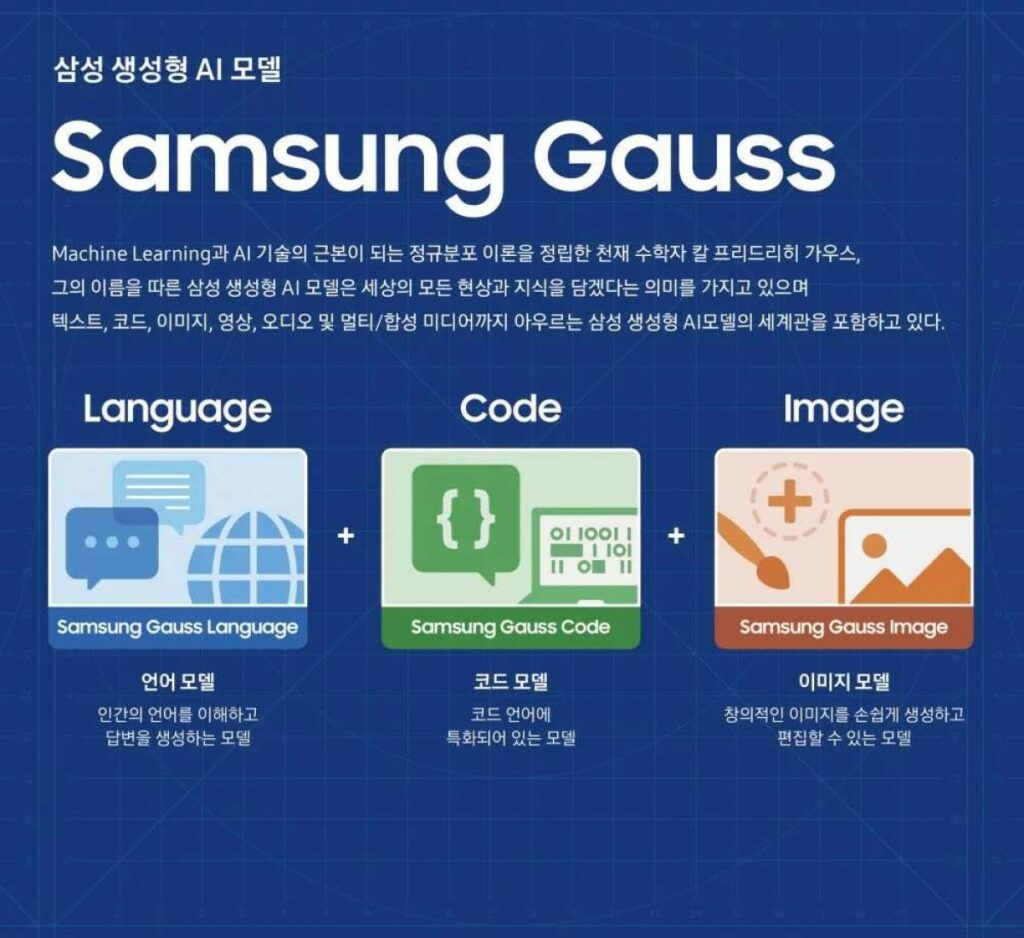
Apple is reportedly planning its official entry into the world of generative AI. Apple plans to revamp Siri with its in-house Large Language Model. The development of the new, more powerful Siri is underway, and the company supposedly plans to introduce it in Jun 2024. The iPhone 16 series would be the first to benefit from the new AI-infused Siri. (Android Authority, Twitter)
